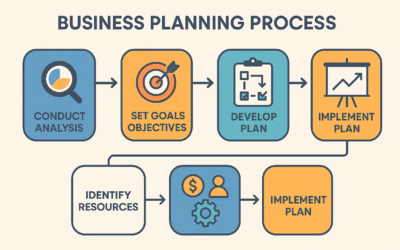Everyone from time to time has denied reality despite all of the evidence to the contrary. However, in business, this level of denial can negatively impact on productivity and getting things done effectively. A recent survey by LeadershipIQ.com showed that almost a quarter of CEOs ended up losing their jobs because they denied reality, refusing to accept the negative facts regarding the performance of their organization.
When a company is engaging actively in the process of strategic planning, you need to take steps to acknowledge reality and use that information to make effective and realistic future plans. The consultants at Global Resources LLC often encounter CEOs who are struggling with this aspect of running their organization. However, as you can see if you check out Global Resources LLC reviews, our team are experts in the field and can offer valuable and experienced advice about how to work with a team that is in denial when working on strategic planning.
Here are some expert tips to help you get started.
Confirmation Bias And The Backfire Effect
There has been extensive research carried out in behavioral economics and cognitive neuroscience to prove that arguing will rarely change minds on any charged issue. So, even if your colleagues are blatantly wrong in their assertions, no amount of arguing with them will change their beliefs. Confirmation bias makes us naturally seek out and interpret information that conforms to our beliefs rather than changing them, so it makes sense that you’ll make no progress in this way. When we’re confronted with information that shakes our view of the world, we tend to jump into defense mode and hold our beliefs even more strongly. This is known as the backfire effect. Luckily, there are pragmatic strategies that can be adapted to address these errors.
Using Dialogue-Based Strategies
The most effective way of approaching colleagues in denial is to use a dialogue-based strategy. There are five key factors that can be addressed to help people give up their own false beliefs. These are:
- Emotions
- Goals
- Rapport
- Information
- Positive Reinforcement
So, how does this work in practice?
Connecting With Emotions
It’s a fact that emotions lie behind many denials of fact. Avoid triggering your colleague’s gut reaction by working first to understand their emotions and work out the emotional blocks that they have.
Establishing Shared Goals
Once your colleague’s position is understood, the next step is to establish a shared goal. This is vital to share knowledge effectively in a professional environment.
Building Rapport
It’s important to listen to your colleague’s concerns then you should rephrase those concerns in your own words. This is known as empathetic listening. It involves listening to others, not to counter their arguments, but to echo their emotions, ease tension and build trust.
Providing Information
Once a rapport has been built up, it’s possible to begin supplying new information while never touching specifically on the pain point. It’s important to wait until this point to provide the key information that is going to change their opinion as, if you introduce it at an earlier stage, the chances of a self-defensive reaction is high.
Providing Positive Reinforcement
After introducing this information and receiving a calm and positive response, it’s time to offer some positive reinforcement to the colleague in question. Offer praise and positivity to raise their morale and make them feel happier about the situation.
Putting These Methods Into Practice
If you have colleagues who are in denial at your next strategic planning meeting, it’s time to put these methods into practice. It’s imperative to work out denials and biases as quickly as possible so you can take action and, thus, enable your organization to move forward on achieving its goals.

0 Comments